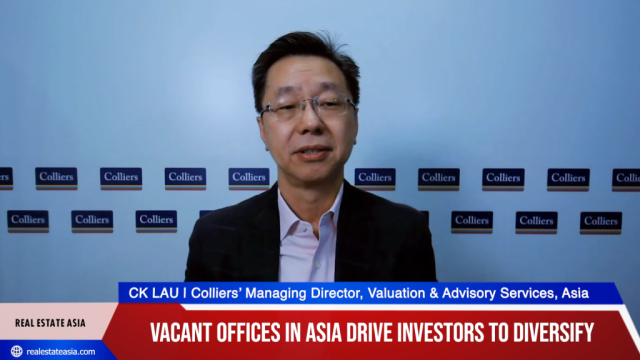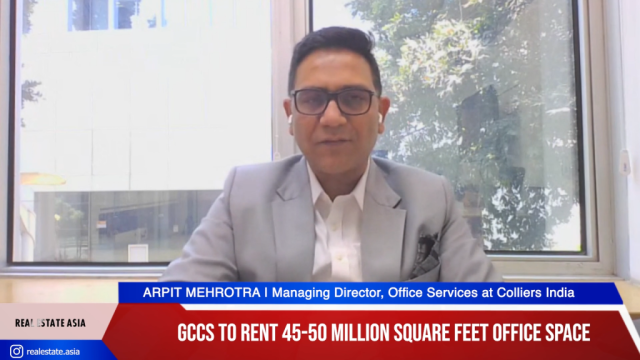 Source: Cushman & Wakefield
Source: Cushman & Wakefield
Closing gaps between C-suites and workers with flexible workspaces in APAC
Flexible work adoption is slower in the Asia Pacific due to lower levels of managerial trust.
Adopting flexible working conditions is notably slower in Asia Pacific compared to other regions across the globe. This may cause concerns because it is unlikely that the world will revert to the old ways of doing work, real estate analysts said.
In its Asia Pacific Office of the Future Revisited report, Cushman & Wakefield found that the shift to flexible working is much more pronounced in North America with more than 50% wanting to attend the office “3 days a month or less," as compared to 20% in Asia Pacific, though there is intraregional variance.
“Whether you were ready for it or not, the pandemic has changed the world, more so the corporate real estate, and office culture. [Companies] need to listen to the employees and [employees, in turn, really need to] understand why the office is going to be important in the future,” Paul Seow, Associate Director, Asia Pacific Total Workplace, told Real Estate Asia.
“It is the perfect time to reconcile that gap between the executors on the ground and the C-suites.”
Cushman & Wakefield tried its hand at reimagining the office of the future after moving into CapitaSpring, with the destination office exuding the same vibe as the best bars in Singapore, as well as transforming its C&W Services Singapore’s Chai Chee office into a “living lab of technology and innovation”.
Seow noted that in treading this path, the company made sure the office was designed with workers at its centre.
“When we were listening to our employees, we used our proprietary workplace strategy tool Experience per Square Foot,” Seow said.
“Together with focus groups and roundtable sessions, our Total Workplace team got to the gist of what was important for our community, both from a business perspective as well as from an employee experience perspective.”
Can you walk us through some of the preliminary findings of the report?
There are three major takeaways from our Asia Pacific Office of the Future Revisited report. First, the demand for office space continues to grow in the Asia Pacific markets and this demand will more than offset the impacts of flexible working resulting in ongoing net positive absorption. The predominant migration flow in the Asia Pacific is from rural areas to urban cities, and Asia's major cities are expected to remain the dominant economic and employment centres in the region.
Second, hybrid working is here to stay; however, the adoption of flexible work practices is slower as compared to the Americas and EMEA. The desire to work flexibly sits in a bit of a spectrum in the different levels between markets. There are markets that have a very strong presenteeism culture in the office, and they are not as familiar with hybrid working and will need greater assistance with change management.
Lastly, the evolving role of the office is a confluence of multiple factors that are redefining the role and utility of the modern office. With the pandemic being one, it's a huge driver of digital transformation in organisations. The rise of Gen Z, the first digitally native generation, who by 2026 will account for 25% of the workforce in APAC, and the rise of DEI (diversity, equity, inclusion), ESG (environmental sustainability and governance), and corporate consciousness. All these three are critical in shaping a destination or purpose-driven office. Companies that persist with outdated policies, technology, and infrastructure support will increasingly find themselves on the back foot in the war for talent.
The report found that the Asia Pacific region showed lower levels of flexible working. How can this be remedied?
The Asia Pacific is a complex geographical region with diverse cultures. Some markets with an ingrained presenteeism culture generally show a high return to the official rate, but very little flexibility or choice for employees. This is further compounded by domestic companies showing higher attendance rates versus multinationals in the same markets.
There are several reasons for these variations, including limited space in residential dwellings and infrastructural issues; but it's interesting to note that markets in the Asia Pacific scored the lowest on the level of managerial trust – that is being trusted by a manager to execute your job with little oversight – and also tend to score very highly in presenteeism culture. Therefore, there needs to be a re-evaluation of how work is changing in the office, the required skill sets and managers to lead hybrid teams, how we deal with performance management and setting baseline behaviours, and the education of employees in embracing a nonlinear workstyle. There must be a multi-pronged concerted effort by companies to redefine their workplace strategy and corporate culture to balance corporate goals and employee needs to land on a solution that works for them.
What is it about Gen Z that is changing the work setup?
I think they are way more interested in the purpose of work. The world has generally changed from the different generations. We used to work to survive, then we worked for prosperity, and then we worked for our children. Now it's working for a purpose. The purpose-driven office is key to underline all these issues that Gen Z are concerned about, and this, of course, includes DEI and ESG initiatives of employers.
With this, what do you think the setup will be like by 2023? Do you think more companies will be shifting to the hybrid setup?
Most certainly because hybrid is here to stay. To have an understanding of what the office needs to be, we start by listening to the needs of our employees. By generating user personas and use cases to understand the why of the office, we can then dive into the where, the how, and what is needed from the space. Every sector of the industry has been disrupted by ideas that flow out of startups, and companies are starting to understand that ideas are the currency of the future. How, then, does an office as a modern agora drive ideas and collisions? We need to step away from the concept of facilities or property management, and into a hospitality-driven people experience to enable this paradigm shift.
Which features do you think other companies can easily adapt to their setups? Where should they start?
Companies should start by listening. The people on the ground know their job, but sometimes that does not translate to the C-suites. Sometimes the C-suites don't have a clear understanding of what's happening on a day-to-day basis.
By listening to the people on the ground, you can very clearly understand what exactly needs to stay, or what needs to change. What are the processes that work, what are the processes that are limiting your employees? Is your middle management ready to work with hybrid working teams? Are they ready to understand what is needed in performance management for remote teams?
Another finding you've shared is that the influence of both DEI and ESG conditions also are included in the workplace. Can you walk us through how this would influence the workplace?
The rising importance of DEI and ESG is not only to employees, but it also reflects good corporate citizenry. The pandemic has drawn a line in the sand for employees, specifically around wellness, health, and the environment. Many companies tack on DEI and ESG policies as an afterthought to what they are doing, but what you need to do is incorporate it from the ground. Understand that an office is not just a place – it's a tool to drive human experience. It’s the people and their interactions in the space that matter. Having a holistic workplace strategy starts by seeking out landlords and buildings that have a strong base in environmental best practices, and layering that with an inclusive design that supports and expands on the recruitment and development of talent and people with disabilities. And of course, bringing in the technology and policies that enable people to engage and thrive in the built environment. It's all about listening, empathising, co-creating, and iterating a workplace strategy and programme that fits your company's and employees' needs and ambitions.
Now, given a post-pandemic, how should companies define their new offices, given that employees are now preferring to work from home?
There needs to be a balance in how companies are addressing this. There is a business goal, and business goals very much drive a lot of decisions that companies make. However, there is also the issue of the war for talent, and what is needed from the employees. There needs to be a task force that sits down and understands what the balances are. Many companies tend to still be making decisions with the crisis management teams that were put together from the pandemic, but that needs to shift into what it's going to look like five years, ten years down the line.
Are there also specific requirements that a company should look into before shifting to hybrid setups?
Yes, it is important to make sure that the infrastructure and processes support your employees. There's nothing worse than getting an employee to work from home, but face legacy processes where they still have to visit the office to execute that task. If they need access to specific servers, is that being taken care of via the company’s VPN and technology pieces?
Having the infrastructure in place with adequate bandwidth and licenses for firewalls is key to making sure that employees can execute their work.
Additionally, it is crucial that your employees are ready to make the change. If there is only one thing that companies do, it is to ensure that they build change management into their programmes.
This is where the concept of Total Workplace, comes in. Look at the workplace as a holistic ecosystem and not just specific places. Companies are hyper-focused on the where and the what. It is really all about how work is changing and why we are transforming our businesses. The where and the what of the office will fit into place once the first two questions are answered.





















 Advertise
Advertise







